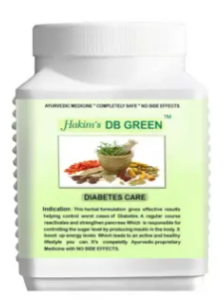We take pride in ensuring timely delivery to our customers across the globe, typically arriving within 20-30 days.
ALERT: October 15, India Post has started the shipment to the US with 50% Tariffs
We take pride in ensuring timely delivery to our customers across the globe, typically arriving within 20-30 days.
ALERT: October 15, India Post has started the shipment to the US with 50% Tariffs
We take pride in ensuring timely delivery to our customers across the globe, typically arriving within 20-30 days.
ALERT: October 15, India Post has started the shipment to the US with 50% Tariffs

Ayurved, India’s holistic, integrated, physiotherapeutic medical system is based upon the universal natural law of balancing the five elements (ether, air, fire, water and earth) that make up the physical body. Hakim’s Green Life, When one or more of these elements go out of balance because of improper diet and life style, various diseases and mental disturbances can manifest
Ayurveda, the ancient Indian system of medicine, offers a holistic approach to managing high blood pressure (hypertension). This approach involves lifestyle modifications, dietary changes, herbal remedies, and practices aimed at balancing the body’s doshas (fundamental bio-energies: Vata, Pitta, and Kapha). Here’s a detailed overview of Ayurvedic approaches to managing high blood pressure:
In Ayurveda, high blood pressure is often associated with an imbalance in the doshas, particularly Pitta and Vata. The condition is seen as the result of stress, poor diet, sedentary lifestyle, and emotional factors, which can lead to an imbalance in the body’s energy flow and physical function.
Ayurveda emphasizes a balanced diet tailored to one’s dosha type. General dietary recommendations for managing high blood pressure include:
Specific foods beneficial for managing high blood pressure include:
Ayurveda employs various herbs known for their antihypertensive and calming properties:
Ayurvedic lifestyle recommendations to manage hypertension include:
Managing stress is crucial in Ayurveda for controlling high blood pressure. Techniques include:
It’s important to consult with a qualified Ayurvedic practitioner before starting any herbal treatments or significant lifestyle changes. They can provide a personalized plan based on one’s unique constitution (Prakriti) and current imbalances (Vikriti).
Ayurveda provides a comprehensive approach to managing high blood pressure by addressing the root causes and promoting overall well-being through diet, herbs, lifestyle modifications, and stress management techniques. By following these holistic practices, individuals can achieve better control over their blood pressure and enhance their overall quality of life
Hakim’s DB Green – Diabetes Care
This herbal formulation gives effective results helping control worst cases of Diabetes. A regular course reactivates and strengthen pancreases which is responsible controlling the sugar level by producing insulin in the body. It boost up energy levels which leads to an active and healthy lifestyle you can. It’s completely Ayurvedic Proprietary Medicine with NO SIDE EFFECTS.